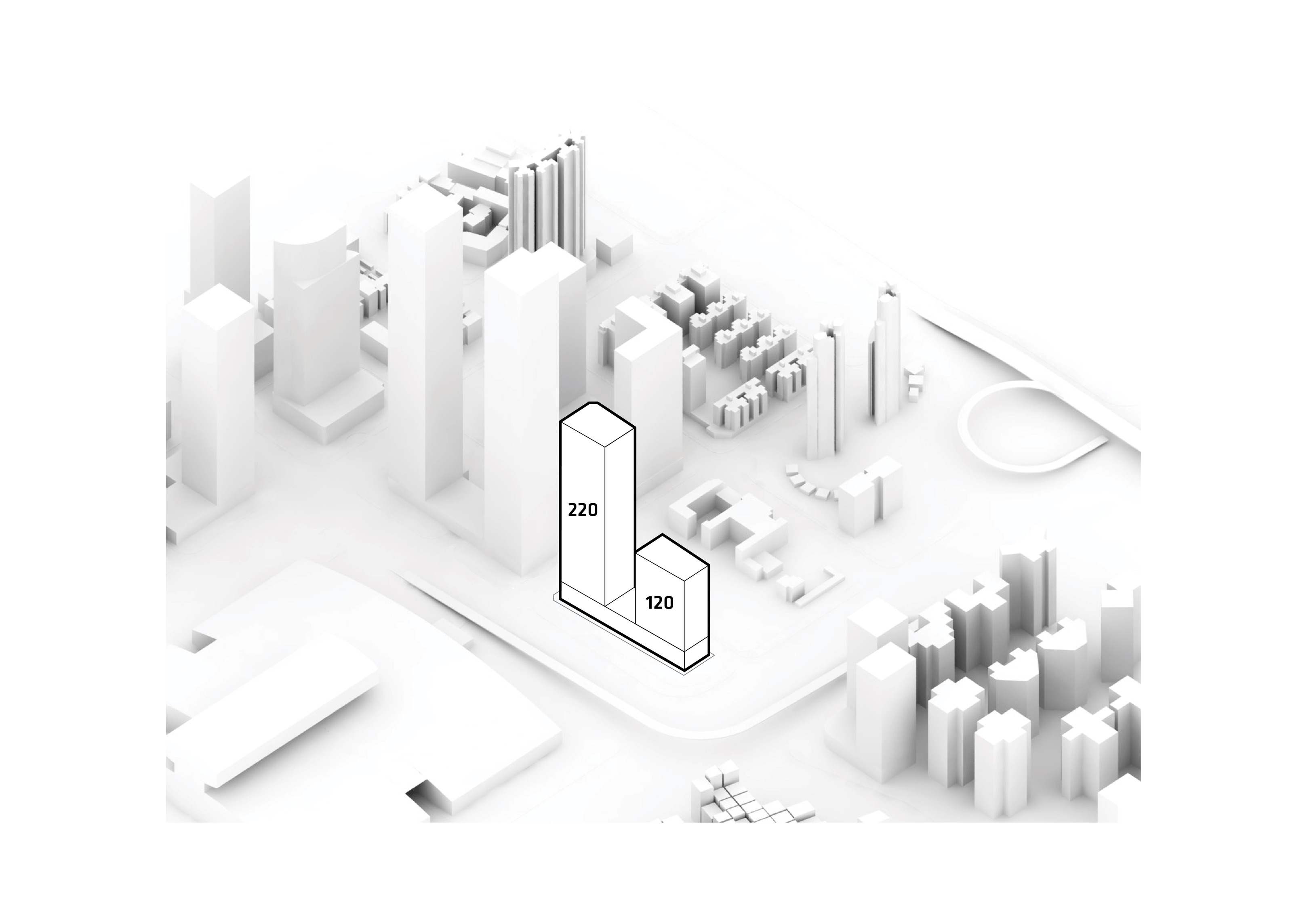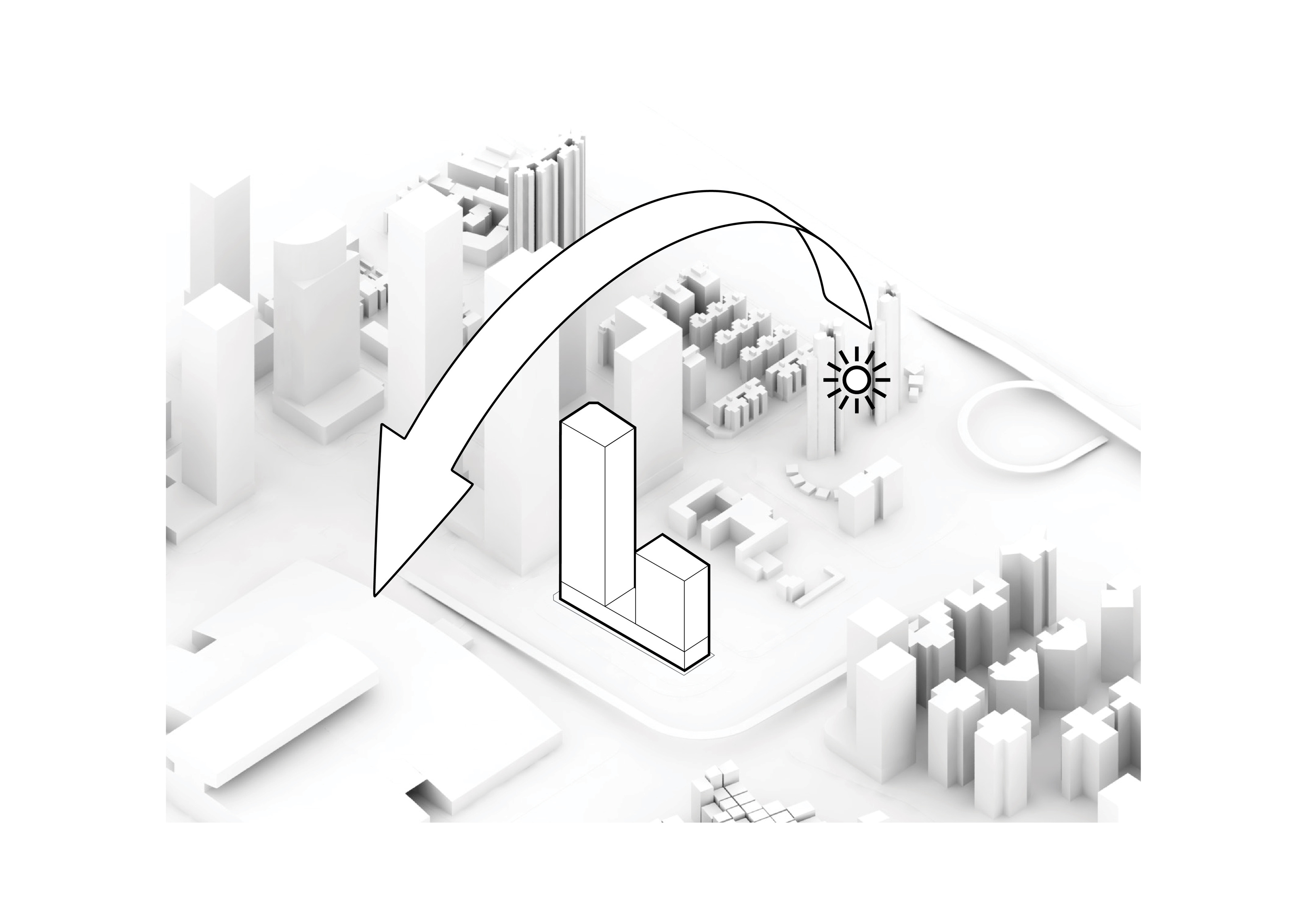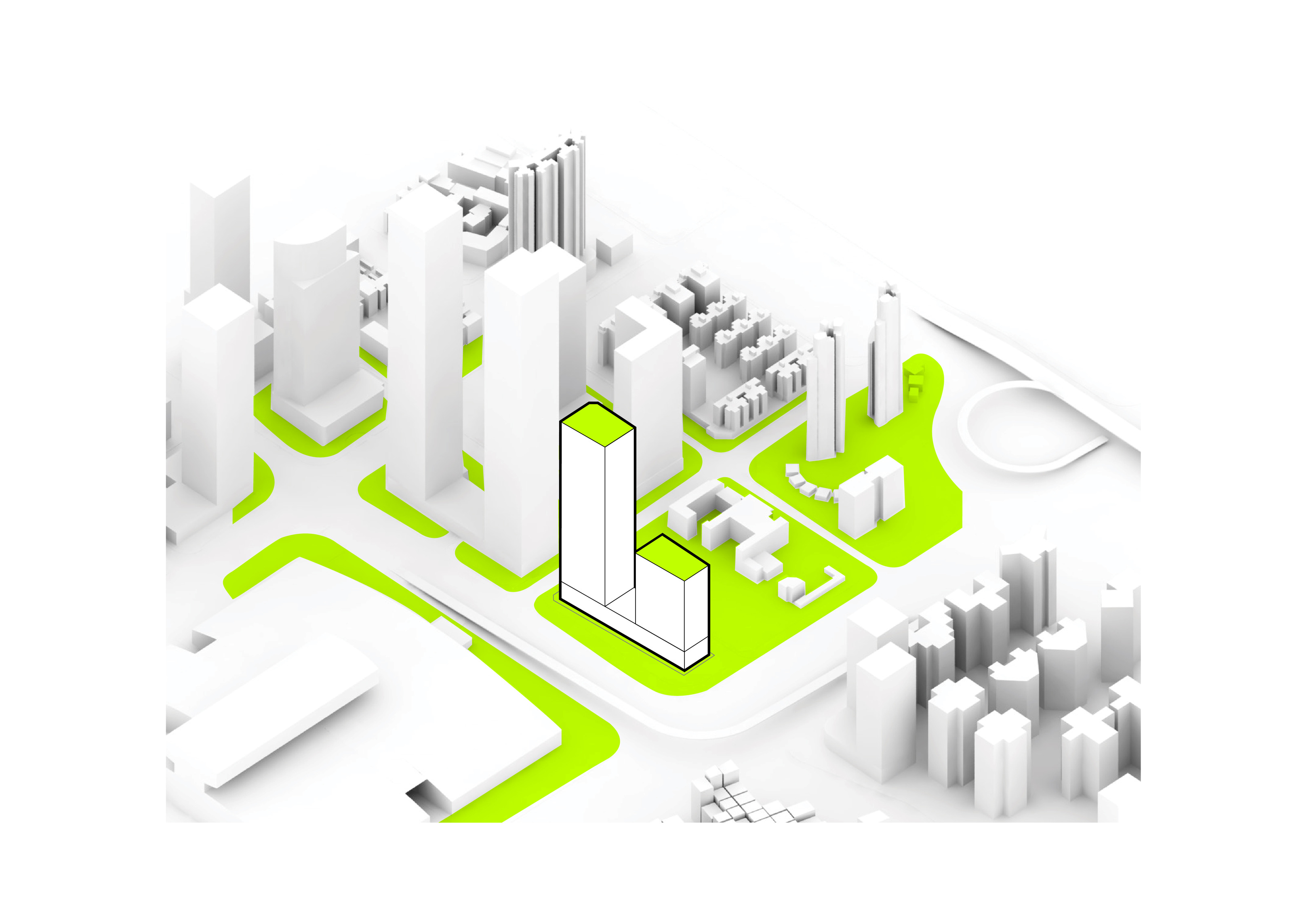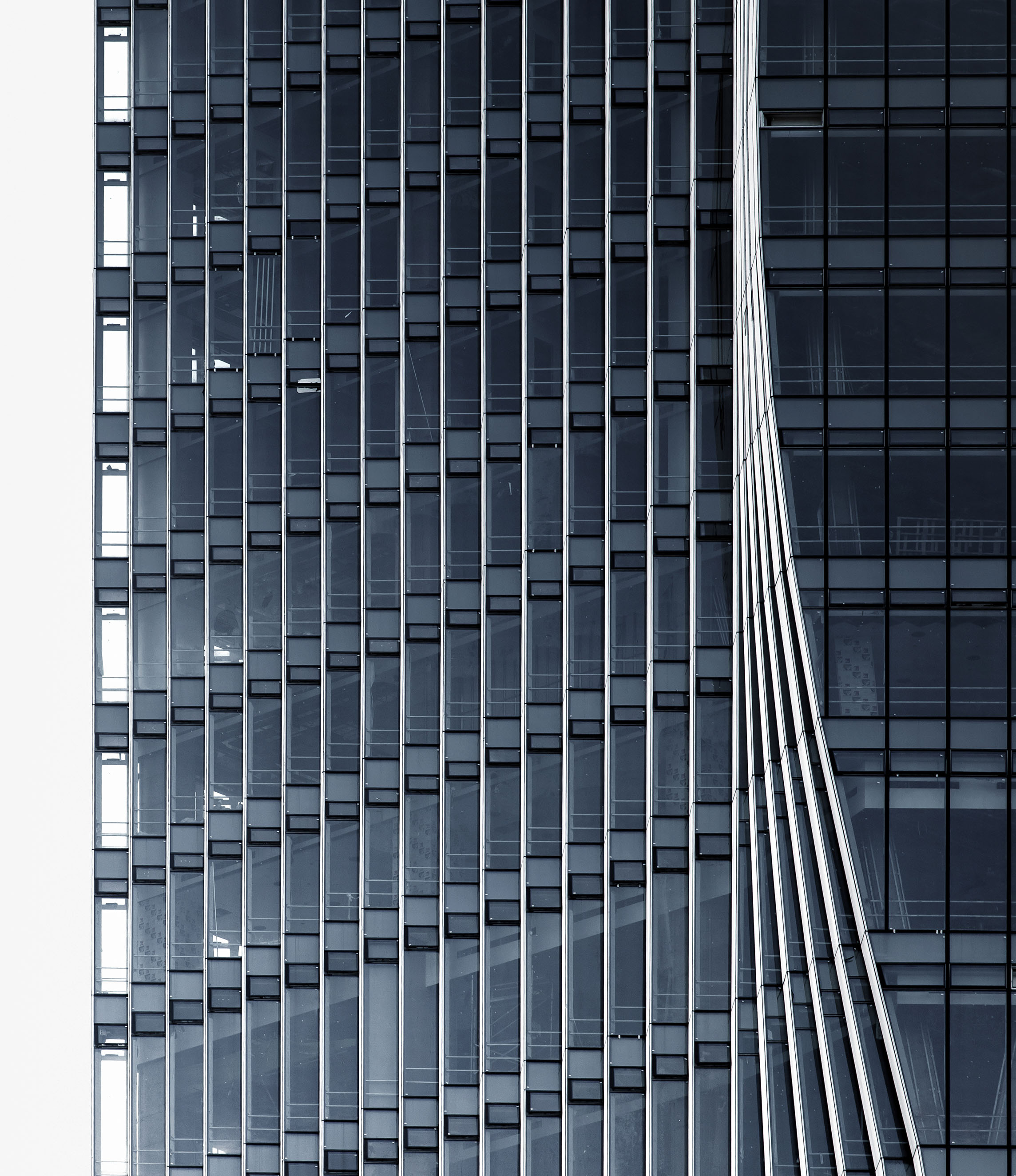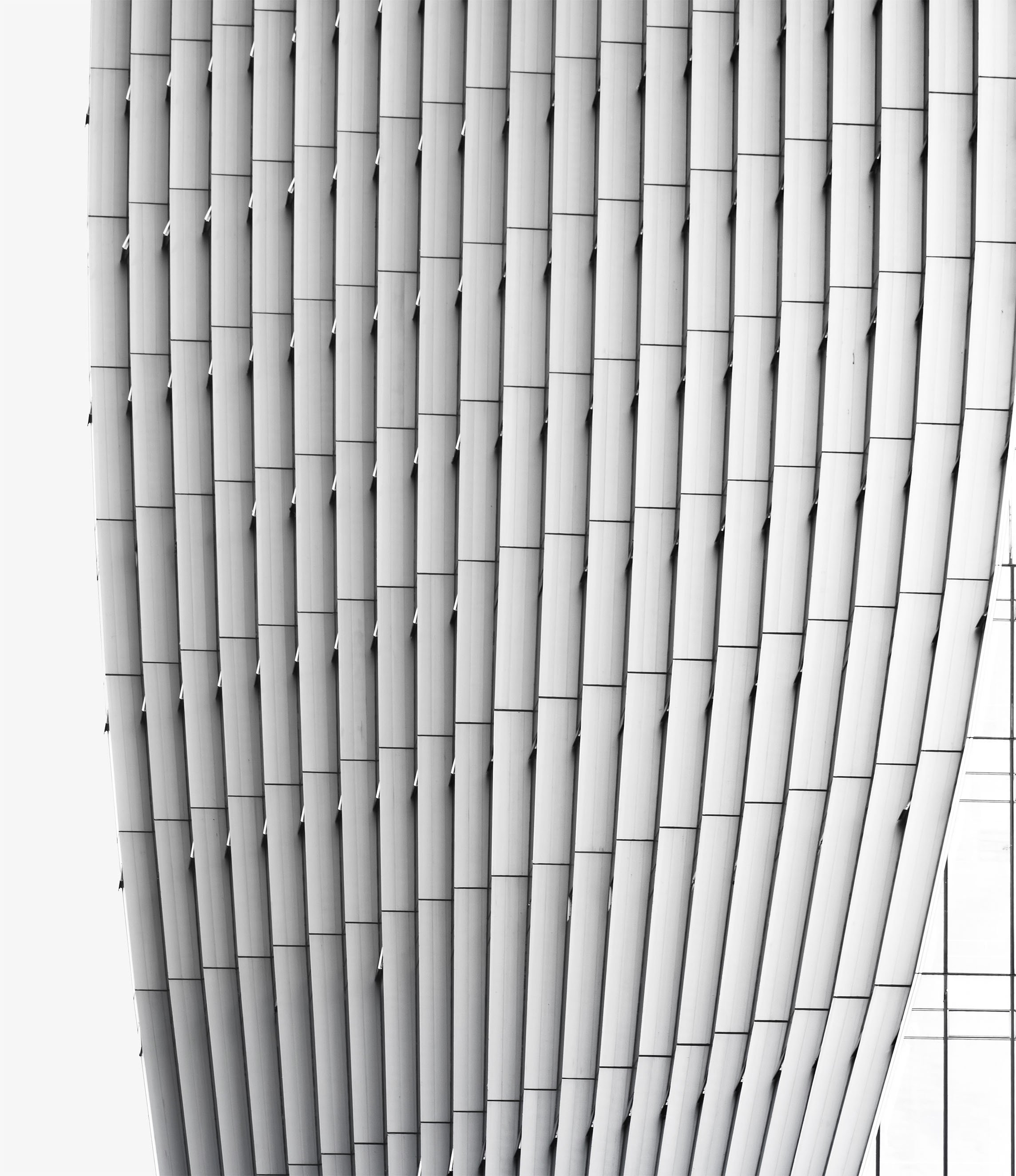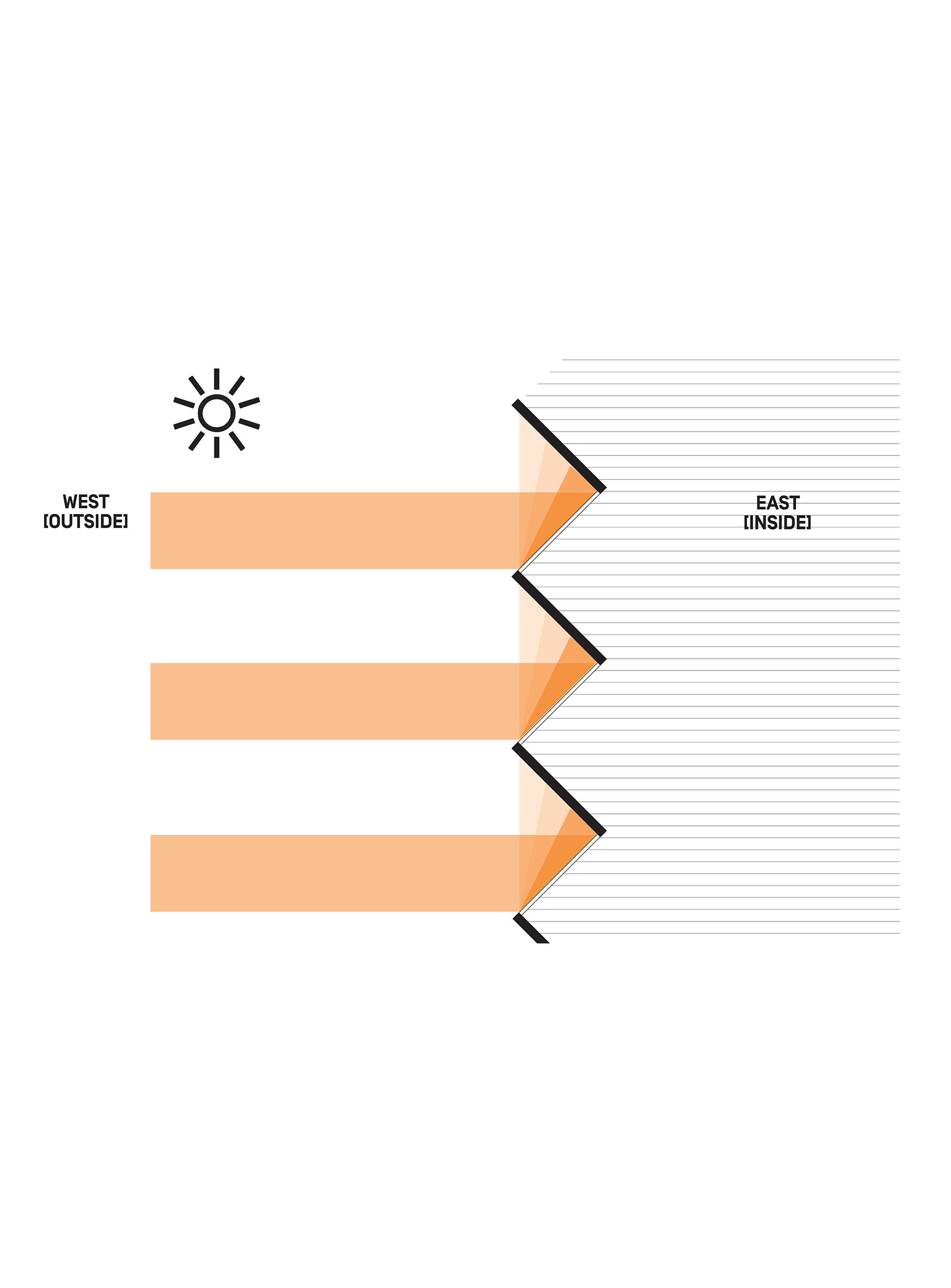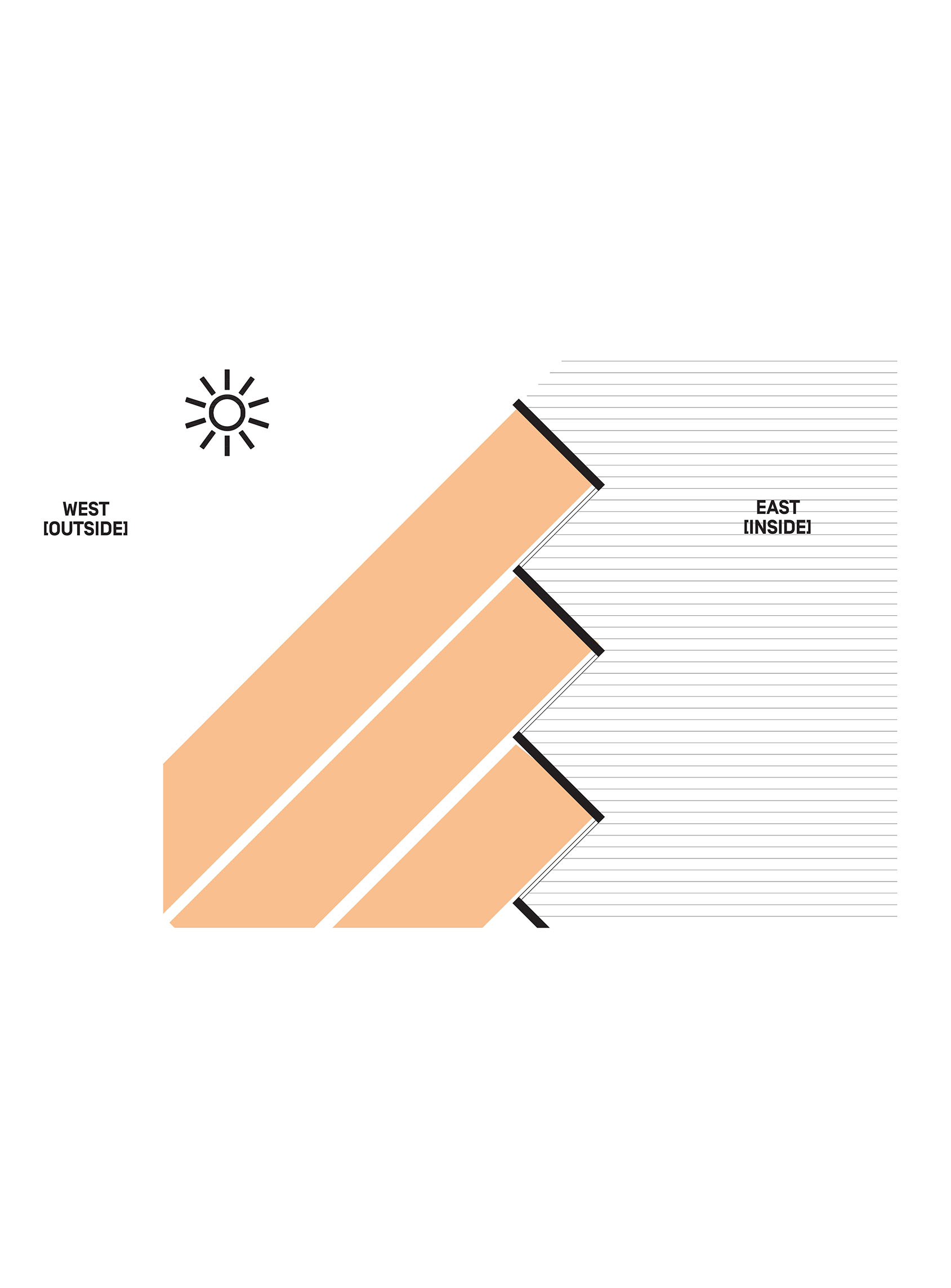STATUS
COMPLETED
SHENZHEN, CHINA
CLIENT
Shenzhen Energy Company
TYPOLOGY
Work
SIZE M2/FT2
96,000 / 1,033,344
STATUS
COMPLETED
SHARE
The 96,000 m2 home for the state-owned Shenzhen Energy Company looks different because it performs differently: the building skin is developed to maximize the sustainable performance and workplace comfort in the local subtropical climate of Shenzhen, China’s tech and innovation hub.
BIG won the international design competition in the city known as China’s ‘Silicon Valley’ with ARUP and Transsolar in 2009, responding to the brief that asked for the building to look and feel at home in the cultural, political and business center of Shenzhen, while standing out as a new social and sustainable landmark at the main axis of the city.
The development consists of two towers rising 220 m to the north and 120 m to the south, linked together at the feet by a 34 m podium housing the main lobbies, a conference center, cafeteria, and exhibition space. The volume and height of the HQ was predetermined by the urban masterplan, leaving BIG with façade design. BIG envisioned an undulating façade – like the structure of a palm leaf or the folded screen of a lamp.
Within this logic, the façade could be stretched in certain key conditions. We could make bigger openings for the entry lobby or large board rooms on the upper floors. Always
respecting the cardinal rule – everything that
faces the sun is as closed as possible, and
everything that faces the north is open.
The sinuous direction of the façade corresponds to the solar orientation: it maximizes north-facing openings for natural light and views, while minimizing exposure on the sunny sides. Working with Arup engineers, BIG calculated that this very simple idea reduces the solar exposure and resultant air conditioning expenses by 30% – without any moving parts or complicated technology. Purely because of the inherent properties of the building geometry, the building performs
better in terms of its energy use, its carbon
footprint, and the quality of the daylight within.
"Shenzhen Energy Mansion is our first realized example of ‘engineering without engines’ - the idea that we can engineer the dependence on machinery out of our buildings and let architecture fulfill the performance. Shenzhen Energy Mansion appears as a subtle mutation of the classic skyscraper and exploits the building’s interface with the external elements: sun, daylight, humidity and wind to create maximum comfort and quality inside. A natural evolution that looks different because it performs differently."
The undulating building envelope creates a rippled skin around both towers and breaks away from the traditional glass curtain wall. The towers appear as a classical shape with an organic pattern from a distance and as an elegant pleated structure close-up.
From the street level, a series of walls are pulled open for visitors to enter the commercial spaces from the north and south end of the buildings, while professionals enter from the front plaza into the daylight-filled lobby. Once inside, the linearity of the building façade continues horizontally: the pixel landscape of the stone planter boxes is in the same dimensions and pattern as the ripples of the building envelope.
The offices for Shenzhen Energy Company are placed on the highest floors for employees to enjoy views to the city, while the remaining floors are rentable office space. Within the protruded areas of the building, the façade is stretched out – two smooth deformations create large spaces for views on each floor, meeting rooms, executive clubs and staff facilities.
The folded wall provides a free view through clear glass in one direction and creates a condition with plenty of diffused daylight by reflecting the direct sun between the interior panels. Even when the sun comes directly from the east or west, the main part of the solar rays is reflected off of the glass due to the flat angle of the windows.
As the sun sets, the changing transparency and the curved lines of the façade create an almost wood-like texture or a scene of vertical terraced hills. The slits that open between the curtain wall to reveal special spaces inside, lend the building a distinct character from different parts of the city.
Bjarke Ingels Martin Voelkle Brian Yang Andreas Klok Pedersen Catherine Huang Jelena Vucic Annette Jensen Buster Christensen David Brown Doug Stechschulte Iris Van der Heide Jan Magasanik Mikkel Marcker Stubgaard Song He Zoltan Kalászi Gül Ertekin João Albuquerque Brandon Cook Alessio Zenaro Alexandru Cozma Alina Tamosiunaite Alysen Hiller Ana Merino Andre Schmidt Andreas Geisler Johansen Armor Gutiérrez Rivas Balaj Alin Iulian Baptiste Blot Cecilia Ho Christian Alvarez Christin Svensson Claudia Hertrich Claudio Moretti Cory Mattheis Dennis Rasmussen Eskild Nordbud Fan Zhang Felicia Guldberg Flavian Menu Fred Zhou Gaetan Brunet Henrik Kania Kuba Snopek James Duggan Schrader Jan Borgstrøm Jeppe Ecklon Jonas Mønster Karsten Hammer Hansen Malte Kloe Michael Andersen Min Ter Lim Nicklas Antoni Rasch Oana Simionescu Philip Sima Rui Huang Rune Hansen Sofia Gaspar Stanley Lung SungMing Lee Takuya Hosokai Todd Bennett Xi Chen Xiao Xuan Lu Xing Xiong Xu Li Yijie Dang Michal Kristof
Architizer A+ Award, Popular Choice in Commercial-Office High-Rise, 2019
CTBUH Best Tall Building Award of Excellence, 200-299 Meters Category, 2019
HKIE Structural Excellence Award, 2018
Arup
Transsolar
Front
